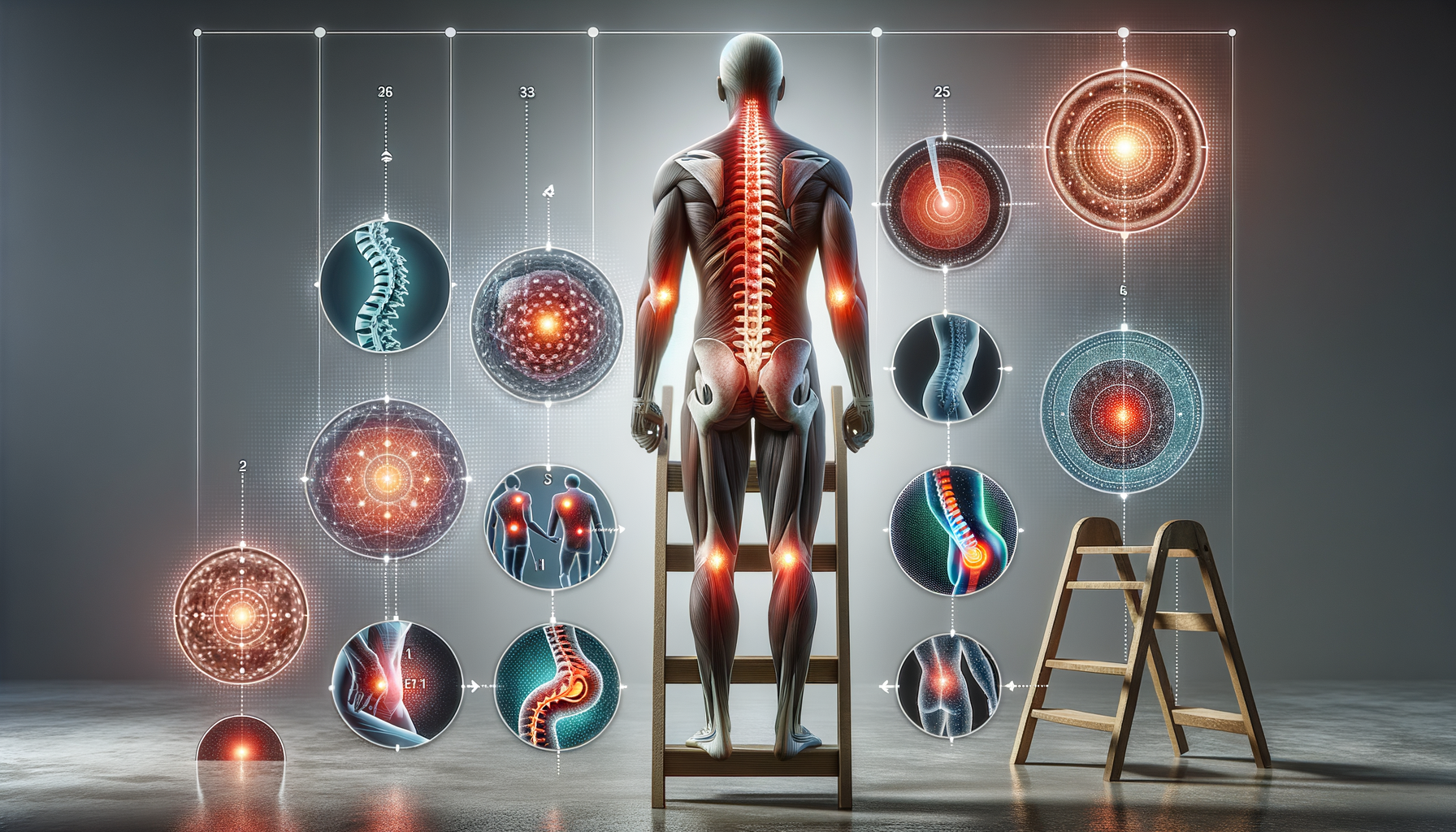Understanding Back Pain: An Overview
Back pain is a common ailment affecting millions of individuals worldwide. It can range from a mild inconvenience to a debilitating condition that significantly impacts daily life. Understanding the various levels of back pain is crucial in identifying symptoms and determining appropriate care methods. Recognizing the types and causes of back pain can empower individuals to make informed decisions about their health and seek timely medical intervention when necessary.
Back pain is often categorized into acute, subacute, and chronic stages. Acute back pain is typically sudden and lasts for a short period, often due to an injury or strain. Subacute pain may persist for a few weeks, while chronic back pain lasts for more than three months and may be indicative of an underlying condition. Identifying the level of pain is the first step in addressing it effectively and choosing the right treatment methods.
The importance of understanding back pain cannot be overstated, as it is one of the leading causes of disability worldwide. It affects individuals of all ages and can result from various factors, including poor posture, sedentary lifestyle, or underlying health conditions. By gaining insight into the nature of back pain, individuals can adopt preventive measures and seek appropriate treatment options to alleviate symptoms and improve quality of life.
Acute Back Pain: Causes and Quick Relief
Acute back pain often strikes suddenly, causing discomfort and limiting mobility. This type of pain is usually a result of muscle strain, ligament sprain, or a sudden awkward movement. While it can be alarming, acute back pain is generally short-lived and can be managed with simple self-care methods.
Immediate relief for acute back pain can be achieved through the following methods:
- Rest: Allowing the back to rest for a short period can help reduce inflammation and alleviate pain.
- Ice and Heat Therapy: Applying ice packs can reduce swelling, while heat therapy can relax tight muscles.
- Over-the-Counter Pain Relief: Non-prescription medications can help manage pain and reduce inflammation.
It’s important to note that while rest is beneficial, prolonged inactivity can worsen symptoms. Gentle movements and stretching can aid in recovery and prevent stiffness. If acute back pain persists or worsens, seeking medical advice is recommended to rule out more serious conditions.
Subacute Back Pain: Management and Prevention
Subacute back pain can linger for several weeks, often following an episode of acute pain. It may result from improper healing or continued strain on the back. Managing subacute pain involves a combination of self-care and lifestyle adjustments to prevent progression to chronic pain.
Effective management techniques include:
- Physical Therapy: Engaging in guided exercises to strengthen the back and improve flexibility.
- Posture Correction: Maintaining proper posture can alleviate stress on the back and prevent further pain.
- Ergonomic Adjustments: Modifying workstations and daily activities to reduce strain on the back.
Preventive measures are crucial in avoiding the recurrence of subacute back pain. Regular physical activity, weight management, and mindfulness practices such as yoga or tai chi can enhance overall back health. If subacute pain does not improve with these methods, consulting a healthcare professional is advisable for further evaluation and treatment.
Chronic Back Pain: Long-Term Care Strategies
Chronic back pain is a persistent condition that can significantly affect an individual’s quality of life. It often requires a comprehensive approach to management, involving both medical intervention and lifestyle changes. Understanding the underlying causes of chronic pain is essential in developing an effective treatment plan.
Long-term care strategies for chronic back pain include:
- Medical Treatment: Prescription medications or injections may be necessary to manage severe pain.
- Physical Rehabilitation: A structured program to improve strength, flexibility, and endurance.
- Alternative Therapies: Acupuncture, chiropractic care, and massage therapy can offer additional relief.
Chronic back pain management often involves a multidisciplinary approach, combining medical, physical, and psychological therapies. Support from healthcare professionals, along with self-care practices, can help individuals manage symptoms and improve their quality of life. Regular follow-ups and adjustments to the treatment plan may be necessary to address changing needs and conditions.
Conclusion: Navigating Back Pain with Informed Choices
Back pain is a multifaceted condition that requires a nuanced approach to care. By understanding the different levels of back pain and corresponding treatment options, individuals can make informed decisions about their health. Whether dealing with acute, subacute, or chronic pain, adopting appropriate self-care methods and seeking professional guidance when necessary can lead to improved outcomes.
Empowering oneself with knowledge about back pain and its management is a vital step in achieving long-term relief and maintaining a healthy lifestyle. By staying proactive and attentive to the body’s signals, individuals can navigate the challenges of back pain with confidence and resilience.








